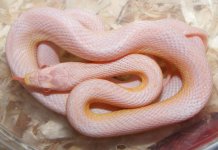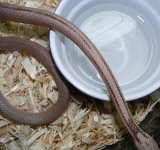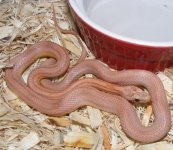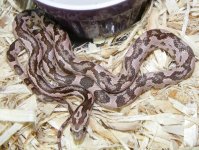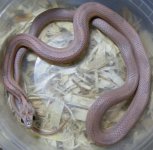-
Hello!
Either you have not registered on this site yet, or you are registered but have not logged in. In either case, you will not be able to use the full functionality of this site until you have registered, and then logged in after your registration has been approved.
Registration is FREE, so please register so you can participate instead of remaining a lurker....
Please be certain that the location field is correctly filled out when you register. All registrations that appear to be bogus will be rejected. Which means that if your location field does NOT match the actual location of your registration IP address, then your registration will be rejected.
Sorry about the strictness of this requirement, but it is necessary to block spammers and scammers at the door as much as possible.
You are using an out of date browser. It may not display this or other websites correctly.
You should upgrade or use an alternative browser.
You should upgrade or use an alternative browser.
Patternless and vanishing pattern questions!
- Thread starter pheonix
- Start date
Buzzard
two corny
Vanishing Stripe is a form of the striped morph cornsnake selectively bred for a vanishing pattern. It is also referred to as "patternless" - the babies from our vanishing stripe male and female will be labeled as het stripe.
This link explains the genetics behind the pattern related morphs such as stripe:
http://serpwidgets.com/main/patterns
This link explains the genetics behind the pattern related morphs such as stripe:
http://serpwidgets.com/main/patterns
ghosthousecorns
Well-known member
it's a morph (the striped gene) + selective breeding. Not all striped corns have the vanishing pattern, but all vanishing patterns are genetically stripes.
NiklasTyreso
New member
So you can't have a het patternless? In itself it is not a morph, right?
A morph is "One of various distinct forms of an organism or species."
http://www.thefreedictionary.com/morph
With that definition any bred form can be a morph. It should not matter if it depends on known genes or if it is selectively bred, as long as the animals are of a distinct form.
So, miami phase, okeetee as well as stripes should be in the category of a morph.
/ Niklas
But no, it's not a single gene that causes patternless, so you can't have "het patternless".
I agree completely.
A morph is "One of various distinct forms of an organism or species."
http://www.thefreedictionary.com/morph
There's various definitions for words like "morph," "hybrid" and even "species." So I wouldn't get too caught up with what one source defines a word as. Rather, I would see how the word is applied to the hobby.
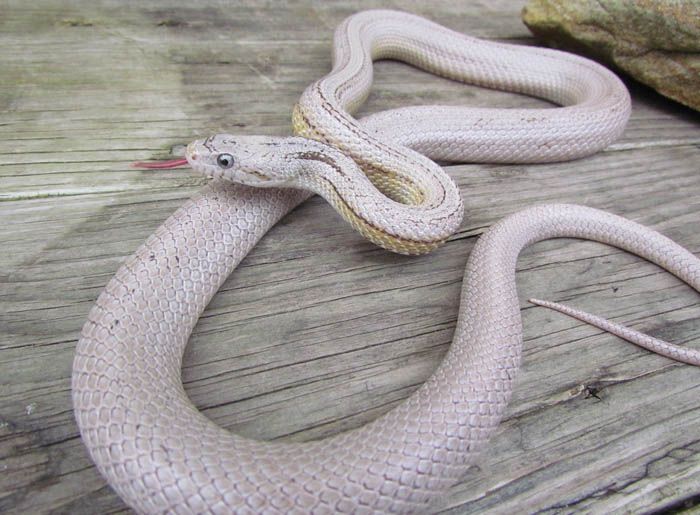
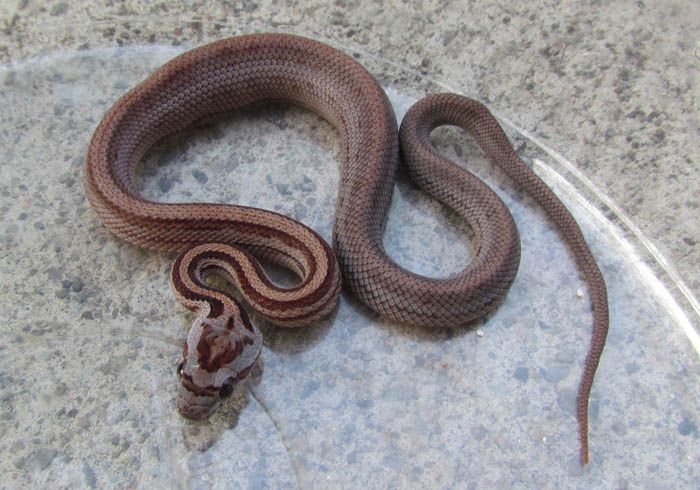
NiklasTyreso
New member
(the striped gene) + selective breeding. Not all striped corns have the vanishing pattern, but all vanishing patterns are genetically stripes.
What happens when you make outcross with normals and get het stripes?
Will the selective breeding for vanishing pattern make the outcrossed normal hatchlings het stripe get bigger or smaller blotches on their back?
dave partington
Crazy Dave
Basically, are either of those morphs? Or is it more like a locality? Thanks guys!!
Warning, this post is a mess.
There seem to be a lot of snakes floating around in the trade labeled as vanishing, patternless, disappearing pattern, etc. I like to mix up and remix a lot of patterns. Because much work was done with cornsnakes before the internet existed, there may have been different breeders working with un-related stock, in which pattern was diminished or absent entirely. I don't believe it would be a stretch to imagine that there are various factors involved for removal of pattern. I have examples of individuals which are entirely patternless, from Rich Hume (ghost stripe bloodred, in which the hypo is so thick the pattern disappears, for lack of better terminology) ; JMG VP (dozens) and PascoPaul (occasional individual champagnes in which the pattern fades away completely as they age, so you need to get a lot of them and hope you get lucky as they age.) I believe it was Kathy Love who had a wild caught (w/c) patternless at some point. Because I am not all-knowing, I am sure I have left some people out. Please chime in.
If you breed
motley with no other pattern hets X stripe with no pattern hets ,
you get all motley because motley is dominant to stripe.
Then you take one of those motley offspring and breed it X stripe with no pattern hets
Technically you should get back all motleys, but some may be visually striped, and they should be all motleys. But sometimes there is a gene of motley and a gene of stripe, one of each, and a homozygous motley stripe pops up, but you can only figure this out from test breeding to prove it out.
But sometimes other stuff pops up which has a visual stripe on part of its body, or dashes running the length of the dorsal, where there should be a more complete pattern, but the pattern is missing in places. Or you might get some cube looking stuff. Or, or, or.
Regarding the JMG Line of Vanishing Pattern Specifically:
-as per what I learned from Jeff Sr at JMG, who developed the line.
Thank You Jeff.
This involves removal of pattern; the removal of the genetics which cause pattern to be present in the first place.
Several generations back, a stripe hatched out, but the stripe only went about half way down the body, and then vanished. I believe it was male. The F1. The individual was grown out and bred back to stripe females, which F2 resulted in around 90% normal stripe, 10% had some stripe missing towards the tail.
In subsequent sib to sib pairings over generations, in F3 (means third generation) there were around 15-20% with some stripe missing, some had a lot of stripe missing.
VP is a trait. It is the removal of gene.
As one breeds them along, hold back the examples which have the least visual pattern. This will be obvious at hatching, regardless of if they contain hypo.
Like can you have a het patternless or het vanishing pattern? In itself it is not a morph, right?
When one continues to breed them sib X sib, sib X parent, from a limited amount of related stock, for too long, deformities and such occur, so it becomes necessary to to outcross to non-VP stock.
I do not know the genetic origin of Aztec in the trade.
If bred to stripe, the stripe comes back in but maybe 10% are absent of stripe, or have diminished stripe. Also some which are visually zigzag/aztec'ish looking pop up. For the sake of this dissertation, I am calling these "het VP". When they are bred back to VP, a substantially higher percentage of the clutch will hatch out with pattern missing.
If for example one wants to sidetrack into breeding aztec-ish X aztec-ish to see if interlacing the genetic makeup into the F2 will result in more aztec-ish look, then perhaps this is a way to do it, but please check with all of the breeders of Aztecs first to make sure the Aztecs in the trade originated from VP, and if it did not, then give them a different name other than Aztec, to avoid future confusion.
VP X non-stripes, or X non-wild-type-without-other-pattern-hets:
Pattern Results will be all over the place if bred to motley. Especially if the motley came from an X stripe (or X other pattern/locality/trait) pairing.
If you want to bring new colors into the VP line:
VP X Wild Type Pattern:
=All wild type pattern.
Hold back all of them (a lot of mouths to feed).
F2: maybe around 10-20% VP. & some aztec-ish looking stuff. & some will have target color.
Side note: Starting with an individual VP which has the least amount of visible pattern will yield the best result if your target is visually patternless VP. But the ones which have pattern part way down the body and then it disappears, these might be useful for working into a project where one wants more visual color change running the length of whatever that project is about.
VP outcrosses, and even VP X VP sometimes result in new, never before seen patterns on individuals. I feel it is well worth hanging on to the truly unique looking ones to develop new pattern lines.
Because it is not a good idea to breed sib X sib beyond the F2 X F2:
Doing the math before starting any project:
So you have a VP Coral Ghost male.
3. Three female lavenders. I am using Lavender in this example because it has been around a relatively long enough time. So it will be easy to find un-related stock. These three female lavenders are from three different sources, and you have chosen them because visually they are the specific color variant of lavender you are shooting for. They are unrelated because you took the time to make certain they are un-related stock.
VP X Lvn1 = Group 1 (G1)
VP X Lvn2 = Group 1 (G2)
VP X Lvn3 = Group 1 (G3)
Keep the 3 groups separate. This is imperative.
Raise up G1 and breed F2 X F2; hold back targets.
Raise targets up, breed F2 X 3, F3 X F3.
Do this with G2 and G3.
Hitting F4 & F5.
G1, G2, and G3 are only 50% related, because they came from different mothers.
G1-F3 X G2-F3. = F4. Holdback, group. Repeat. F4 X F4 = F5.
F5 from G1 X G2. Breed these into G3. Has your cerebral cortex imploded yet?
By doing so, you are interlacing the trait of VP through several linebred generations, so when you outcross in F7 or F8 X stripe, the VP trait is so thickly interlaced, you should get back around 35-45% VP in the F1. So the VP in this instance appears to behave like a gene, when in fact, there is no gene.
Now with regard to that 35-45% just mentioned,
This next note, off-topic, relates to another recent post, click here.
In non-gene-confirmed red colored -red-factor snakes, personally I suspect that something similar is going on
because the trait is heavily interlaced through several generations, we see results of in F1, and assume from what we have learned elsewhere, that we are seeing co-dominance.
Last edited:
dave partington
Crazy Dave
Thanks Chris.
It would be good to know what Aztec is genetically derived from.
It would be good to know what Aztec is genetically derived from.
dave partington
Crazy Dave
I PM'ed Kathy ; hopefully she'll come out & play.
dave partington
Crazy Dave
fyrefocks
Nate lover
"If you breed
motley with no other pattern hets X stripe with no pattern hets ,
you get all motley because motley is dominant to stripe.
Then you take one of those motley offspring and breed it X stripe with no pattern hets
Technically you should get back all motleys, but some may be visually striped, and they should be all motleys. But sometimes there is a gene of motley and a gene of stripe, one of each, and a homozygous motley stripe pops up, but you can only figure this out from test breeding to prove it out."
Dave, why do you hate me so much?
motley with no other pattern hets X stripe with no pattern hets ,
you get all motley because motley is dominant to stripe.
Then you take one of those motley offspring and breed it X stripe with no pattern hets
Technically you should get back all motleys, but some may be visually striped, and they should be all motleys. But sometimes there is a gene of motley and a gene of stripe, one of each, and a homozygous motley stripe pops up, but you can only figure this out from test breeding to prove it out."
Dave, why do you hate me so much?
kathylove
Pragmatic & Logical
It's actually been a LONG time since I worked with zigzag / Aztec corns. I think we were among the first to notice the zigzag pattern and selectively breed to increase it. But I think that John A. and Rich Z. might have gotten hold of some of the less curvy, more geometric looking Aztecs around the same time. I can't remember if Rich was the first one to call them Aztecs, though. I do remember that we started out with the same w.c. female from Pine Island that was the founder for the charcoal gene. She also had a few wavy, connected blotches. When we inbred to produce charcoal, we started getting more connected blotches, too. But early on in the project, most were ziggy for only about 15 - 25% of the body. So we started selecting for the ones with the ziggiest patterns and went from there. I assume that Rich and John and others with the straighter, more geometric patterned founders started in a similar way. But I would have to actually consult my book to jog the ol' memory at this time, lol!
I should mention that not all bloodlines were compatible. I once got a 95% ziggy corn from Mark Bell and bred it into my line of zigzags. But it never produced anything unusual. I assumed that meant that the broken patterns must be produced by different genes, which may vary in different bloodlines. But I never kept up on genetic work done by others once I got out of them, so my knowledge may be dated by now.
I should mention that not all bloodlines were compatible. I once got a 95% ziggy corn from Mark Bell and bred it into my line of zigzags. But it never produced anything unusual. I assumed that meant that the broken patterns must be produced by different genes, which may vary in different bloodlines. But I never kept up on genetic work done by others once I got out of them, so my knowledge may be dated by now.
dave partington
Crazy Dave
Thanks Kathy!!
Examples of various critters from J M G VP line.
One starts out with twin stripes but it turns into a single dorsal stripe, so it may be the beginning of a new pattern line, if it proves out.
Others show lack of pattern, or diminished pattern. One is sort of aztec-y looking, it is a "het vp".
Examples of various critters from J M G VP line.
One starts out with twin stripes but it turns into a single dorsal stripe, so it may be the beginning of a new pattern line, if it proves out.
Others show lack of pattern, or diminished pattern. One is sort of aztec-y looking, it is a "het vp".



